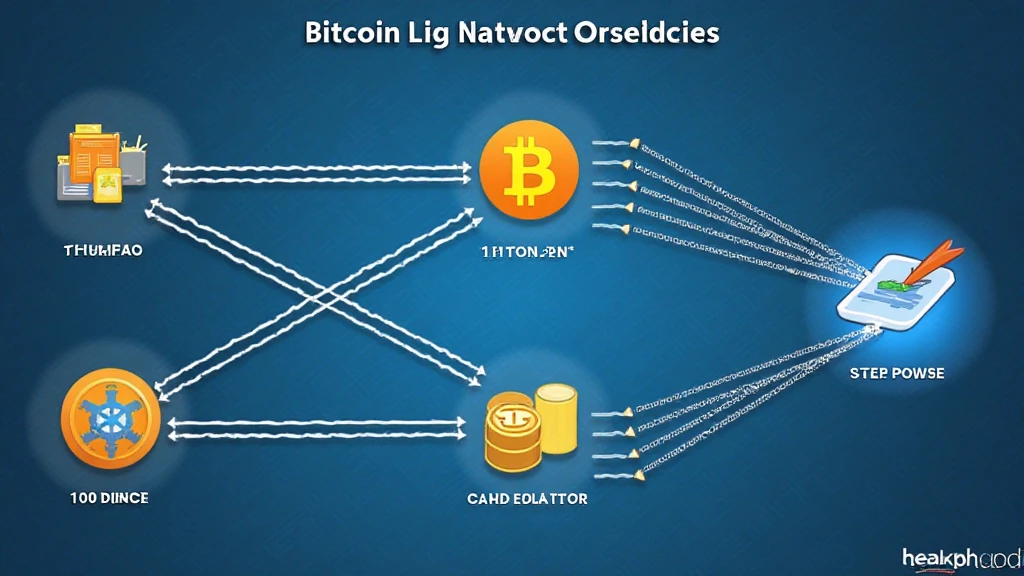Bitcoin Lightning Network Interoperability: Bridging Blockchains
In the rapidly evolving world of cryptocurrencies, interoperability among different blockchain networks is becoming increasingly crucial. According to recent studies, the global blockchain technology market is projected to reach $163.24 billion by 2029. This growth highlights the importance of systems like the Bitcoin Lightning Network, which aims to facilitate faster and cheaper transactions. But how does interoperability fit into this picture?
Understanding the Bitcoin Lightning Network
The Bitcoin Lightning Network is a second-layer solution designed to enhance the scalability and speed of Bitcoin transactions. It allows users to send and receive Bitcoin instantly by creating off-chain payment channels. With the Lightning Network, users can make microtransactions without congesting the main Bitcoin blockchain. Here’s a breakdown of how it works:
- Payment Channels: Off-chain transactions use payment channels, which are private channels between two parties that allow them to transact without broadcasting every transaction to the Bitcoin blockchain.
- Instant Transactions: Users can complete transactions almost instantly, eliminating the need for lengthy confirmations.
- Low Fees: Transaction costs are significantly reduced, making it viable for small payments as well as traditional larger amounts.
The Need for Interoperability
As the cryptocurrency ecosystem grows, the need for interoperability becomes more apparent. Currently, many blockchains operate in silos, meaning assets cannot easily move between different networks. This lack of interoperability limits opportunities for users and developers alike. For the Lightning Network, interoperability can provide several key benefits:

- Broader Market Access: Users could utilize Bitcoin in decentralized finance (DeFi) applications on other blockchains, expanding the usability of their assets.
- Enhanced Liquidity: Increased liquidity across networks can reduce the volatility often associated with crypto prices.
- Efficient Cross-Chain Transactions: Interoperability allows for seamless transactions between Bitcoin and other cryptocurrencies, improving overall efficiency.
Current State of Interoperability in Blockchain
Currently, several projects are working on interoperability solutions, such as Polkadot, Cosmos, and Thorchain. These projects provide frameworks that allow different blockchains to communicate with each other and share data. Here’s a quick overview of these initiatives:
- Polkadot: Enables multiple chains to transfer messages and value in a trust-free fashion.
- Cosmos: Focused on interchain communication, allowing independent blockchains to transact.
- Thorchain: A decentralized liquidity network offering cross-chain trading without the need for custodians.
Challenges to Achieving Interoperability
While the potential benefits of interoperability are significant, several hurdles remain in the path:
- Technical Limitations: Different networks use varying consensus mechanisms, making seamless interaction difficult.
- Security Concerns: Cross-chain transactions could expose vulnerabilities that may lead to hacks or breaches.
- Regulatory Issues: Varying regulations across regions could complicate the implementation of interoperable solutions.
The Role of Bitcoin in Future Interoperability Solutions
As the leading cryptocurrency, Bitcoin plays a pivotal role in shaping the future of blockchain interoperability. Its move towards integration with other blockchains through the Lightning Network could set a precedent for future projects. Here’s how this integration can look:
- Smart Contracts: By incorporating smart contract capabilities, Bitcoin can facilitate more complex transactions across different networks.
- Atomic Swaps: This technology allows for direct trading of one cryptocurrency for another without the need for a centralized exchange.
- Bridges: Cross-chain bridges could be developed to connect the Lightning Network with other networks, enabling easy transaction flows.
Impact on the Vietnamese Cryptocurrency Market
Vietnam has seen substantial growth in cryptocurrency adoption, with a market penetration rate of around 16% in 2023. This growth indicates a burgeoning interest in blockchain technology among Vietnamese users. Integrating Bitcoin Lightning Network interoperability could lead to:
- Increased Adoption: Enhanced transaction capabilities could make cryptocurrencies more appealing to Vietnamese users.
- New Financial Products: The growth of DeFi applications could lead to innovative financial solutions tailored to local users.
Conclusion
In summary, the Bitcoin Lightning Network’s interoperability potential signifies a remarkable evolution in the cryptocurrency space. By breaking down barriers between blockchains, users can harness the full power of digital assets more efficiently and effectively. As we move into this new era of blockchain technology, it’s clear that interoperability will play an essential role in shaping the future of decentralized finance.
For more insights and developments on blockchain technology and cryptocurrencies, visit cryptocoinnewstoday today.





